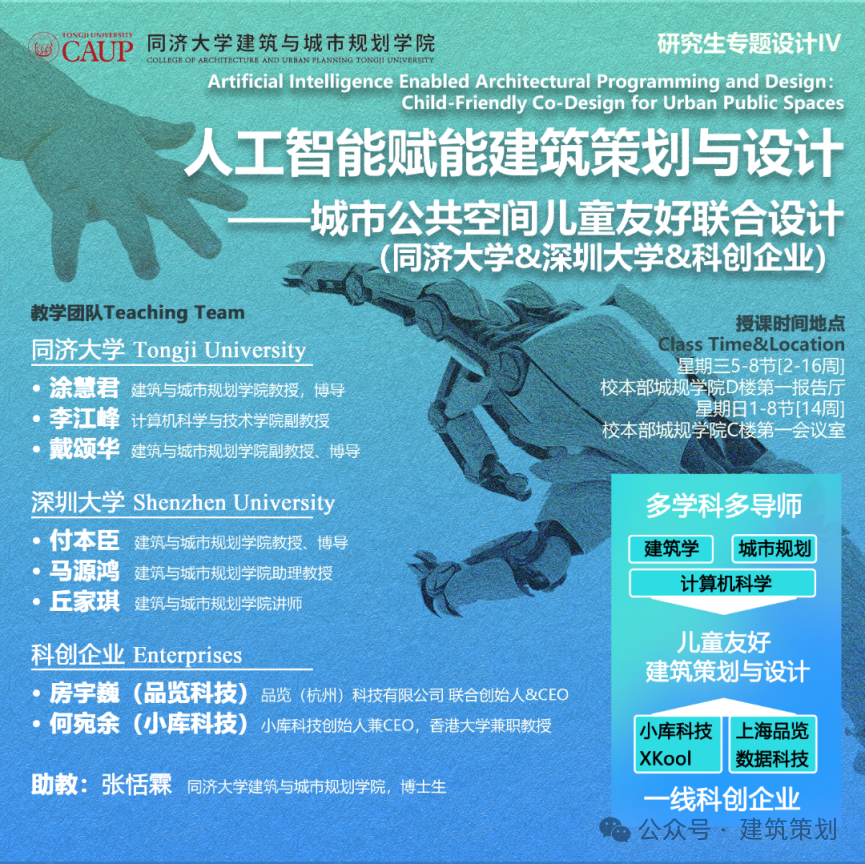

Course Introduction
Tongji University College of Architecture and Urban Planning offers an international graduate course called Artificial Intelligence Empowers Architectural Planning and Design - Child-Friendly Design of Urban Public Spaces. This international design course is offered by Tongji University for 20 years to students of Tongji University, as well as international students and dual degree students from universities in many countries, including the Technical University of Berlin, the National University of Singapore, the Polytechnic University of Madrid, and the National University of Busan.
Spring 2025 design course aims to promote interdisciplinary communication and the application of cutting-edge technology in architectural programming and design, taking “child-friendly design of urban public space” as the object of architectural programming and design. Co-organized by the College of Architecture and Urban Planning of Tongji University, the College of Computer Science and Technology of Tongji University, and the College of Architecture and Urban Planning of Shenzhen University, the course is supported by first-tier science and technology enterprises (X-Kool, Pinlan) and alumni who have explored the frontiers of this cross-cutting field.
The dynamic synergy between artificial intelligence (AI) and architectural design is profoundly affecting the traditional paradigm of architectural design. As a response to the new era of new technologies, the course provides students with a platform to explore new paradigms of future design. It guides students to introduce artificial intelligence technology into architectural planning and design, and guides students to use large models and technologies such as large language models (LLM) and generative artificial intelligence (AIGC) to complete architectural planning and design. While cultivating students' architectural planning thinking, it guides students to critically understand and evaluate the impact of new technologies in the field of architecture.
The design object focuses on “urban child-friendly public space”, where the urban spatial environment is important in promoting children's physical activity and health. However, from the current urban resources and environmental supply situation, the adult-led urban environment construction lacks the necessary response to children: high-rise and high-density urban development squeezes children's public activity space, and children's safety is not guaranteed due to the car-oriented road design. Improving the urban environment and making it more child-friendly is particularly urgent.

This course has achieved multi-subject participation in urban design. In the teaching process, students are guided to look for problems comprehensively and objectively through the way of multi-subject participation. The final report of the course invited experts in architectural planning, artificial intelligence, children's parents, children and other subjects to participate, and was open to the public, with high social participation. You are welcome to sit in and participate, and witness the students' growth in public affairs and advocacy.
 ABOUT US
ABOUT US




